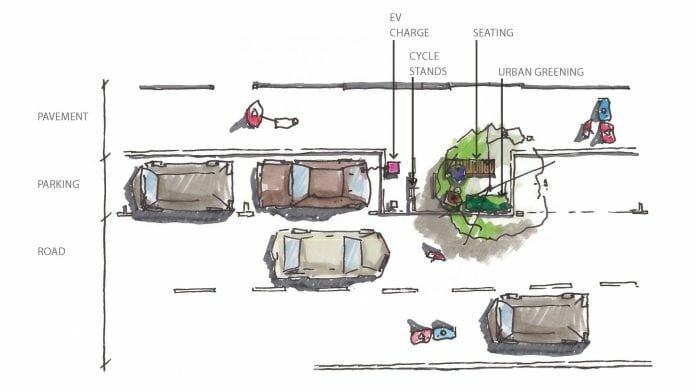
A new project from innovators Arup will convert standard parking bays into electric vehicle recharging points without inconveniencing drivers or pedestrians.
The project, called a ‘ReCharge Parklet’, will convert parking spaces into electric vehicle recharging points which are suitable for both cars and electric bicycles as part of a wider installation which also includes public seating and WiFi.
Arup hopes the creation will address the challenges of installing chargers along the sides of roads, where they can inconvenience pedestrians and might ultimately discourage people from walking in cities. The drive towards electric vehicles and the push to encourage more people to walk are both vital to ongoing decarbonisation efforts in cities, in pursuit of binding and ambitious climate targets as part of the Paris Climate Agreement.
Research suggests that one million electric vehicles will be in use on UK roads by 2020, which will require a large increase in available infrastructure. The new project, which was unveiled today at the Cycle City Active City conference in Manchester, UK, aims to support the wider rollout of electric vehicles infrastructure, which will be necessary to encourage broader uptake.
How does the ‘ReCharge Parklet’ support the UK’s smart city ambitions?
Susan Claris, transport planner at Arup, said that the installation of new infrastructure could create new problems if not approached with a holistic view. An all-party parliamentary group report released today emphasised that the development of smart cities should be approached across sectors, and solutions such as the ‘ReCharge Parklet’ are designed with this in mind.
Claris explained: “Cities are under pressure to install more charging points, but it shouldn’t be at the expense of access and safety for those walking. Tactical urbanism solutions such as these show planners and designers how they can re-engineer and de-clutter streets making them better equipped for everyone, resulting in healthier streets.”
The ‘parklet’ concept has already been tested in central London, with a loading bay in an urban road transformed into a green space. Research suggested that the park trial had a positive impact on trade and could have advantages for the well-being of citizens.


















